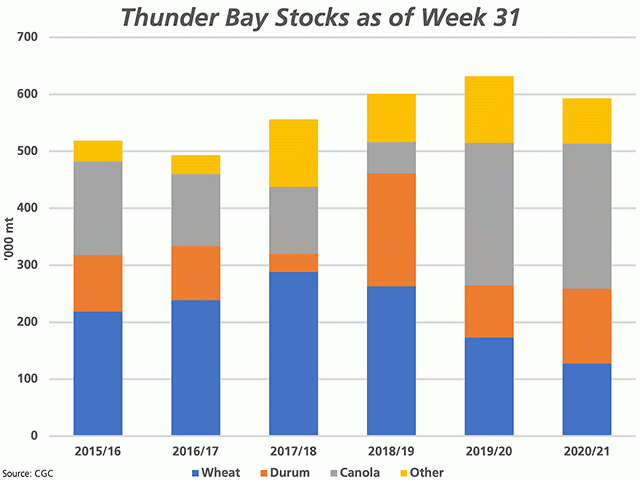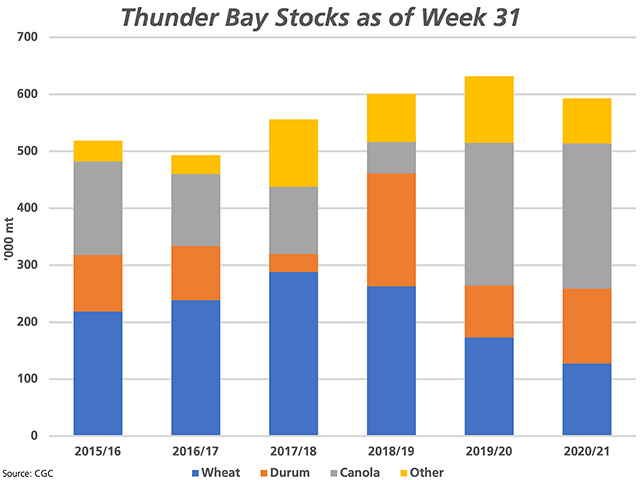Canada Markets
A Look at Thunder Bay Ahead of Spring Opening
The Port of Thunder Bay handled 9.2 million metric tons of grain during the 2020 season, up 16.5% from the previous year, which was the largest volume handled since 1997 according to the Port of Thunder Bay cargo statistics. In 2010, the grain handle volume hit 5.240 mmt, which was the lowest grain handle in port statistics going back to 1954.
At one time, the Port of Thunder Bay was viewed as the largest grain port in the world, while continues to claim the largest grain storage capacity in North America. The largest volume shipped in the port's data was seen in 1971, with the grain volume reported at 15.461 mmt. While grain moved through the port has historically been dominated by movement from Saskatchewan, the 2020 season saw 74% of the unloads originate in Manitoba while just 19% was shipped from Saskatchewan.
Ahead of the 2021 seaway opening, we look at grain stocks and movement for signals of what is to come from this facility.
P[L1] D[0x0] M[300x250] OOP[F] ADUNIT[] T[]
AG Transport Coalition data shows us that during this crop year starting Aug. 1, Canada's two railways have achieved their best performance into the Port of Thunder Bay. As of week 31, or the week ending March 7, CN Rail and CP Rail have supplied 96% of the hopper cars wanted for loading this crop year, or 48,619 of the 50,659 cars ordered, for a shortfall of 2,040 cars. This compares to the 93.6% of the Vancouver bulk cars that have been supplied, for a shortfall of 11,604 cars, and the 89.7% of the Prince Rupert cars that have been supplied, for a shortfall for 3,988 hopper cars.
Looking at recent shipping data reported by the AG Transport Coalition, no cars were reported ordered for Thunder Bay in week 29 or week 30, while in week 31, CP Rail spotted all 288 cars ordered for loading in the week requested while CN Rail spotted none of the 156 cars ordered during the week.
As of week 31, the Canadian Grain Commission reports terminal stocks of 592,800 metric tons, the lowest volume reported for this week in three years but 5.8% higher than the five-year average. This volume is shown by major grain on the attached chart.
Wheat stocks at 127,300 mt (blue-shaded area) is 46.1% lower than the five-year average and the lowest wheat stocks for this week in data checked in more than 10 years, although this can change quickly. Durum stocks of 131,600 mt are up 44.3% from one year ago and is 27.8% higher than the five-year average for this week. As well, canola stocks of 254,600 mt are up 1.8% from the same week in 2019-20 and is 78.5% higher than the five-year average for this week.
Over the past five-years, the first export shipments reported from this port for the season appear in the CGC's weekly report ranging from week 35 to week 37, averaging week 36.
Cliff Jamieson can be reached at cliff.jamieson@dtn.com
Follow him on Twitter @Cliff Jamieson
(c) Copyright 2021 DTN, LLC. All rights reserved.






Comments
To comment, please Log In or Join our Community .